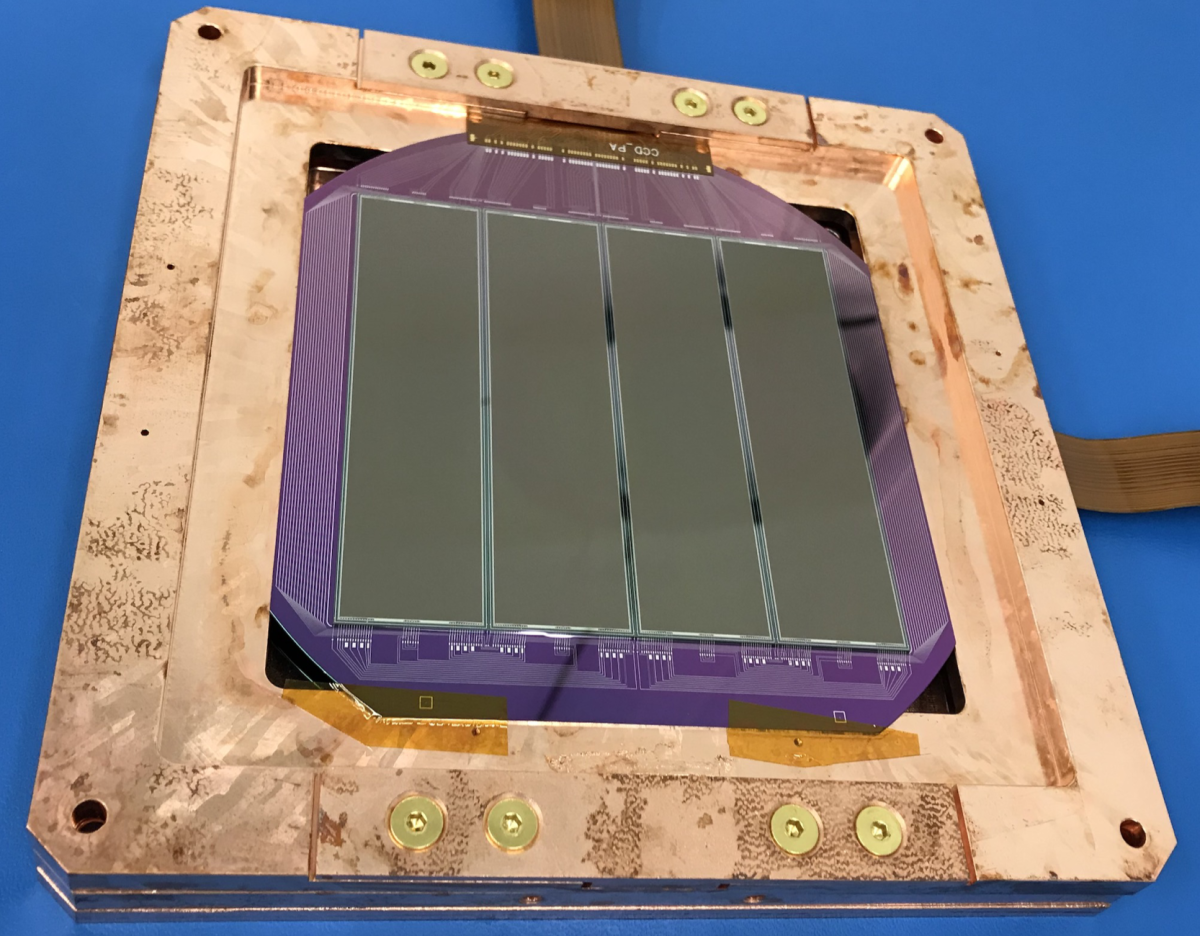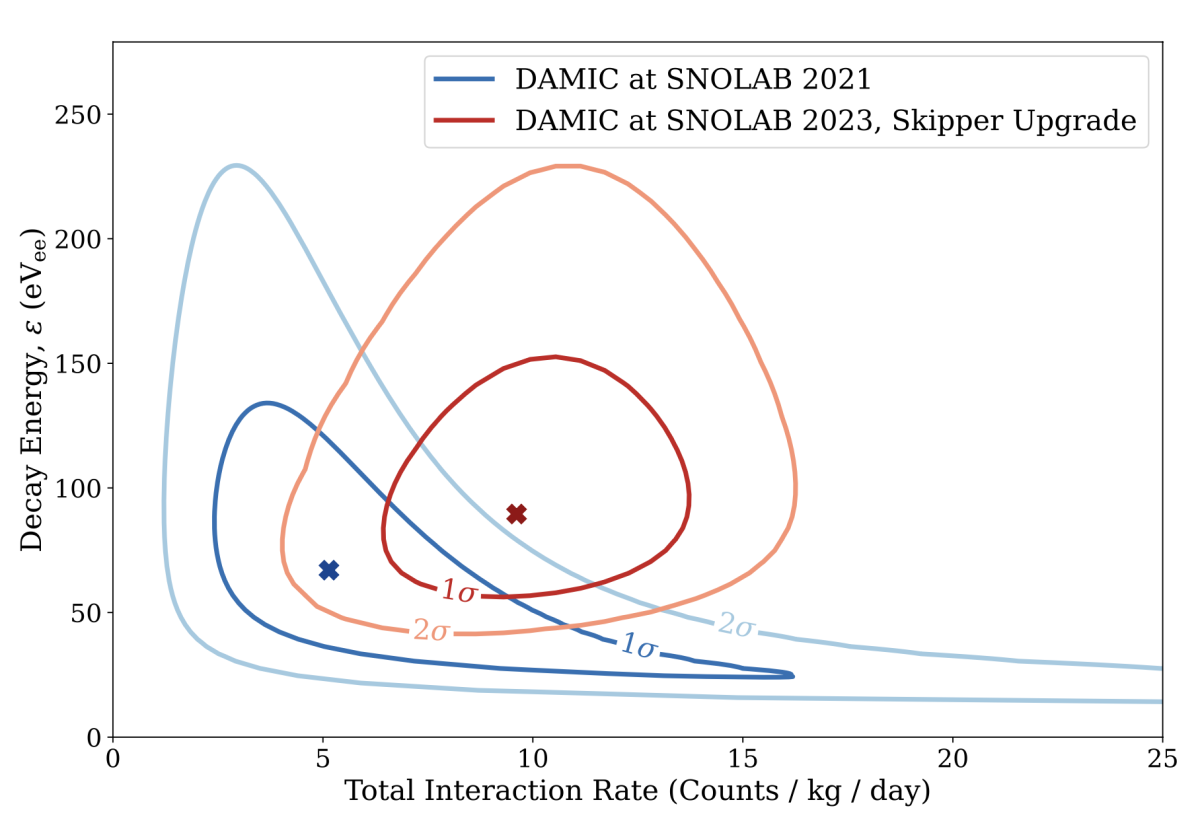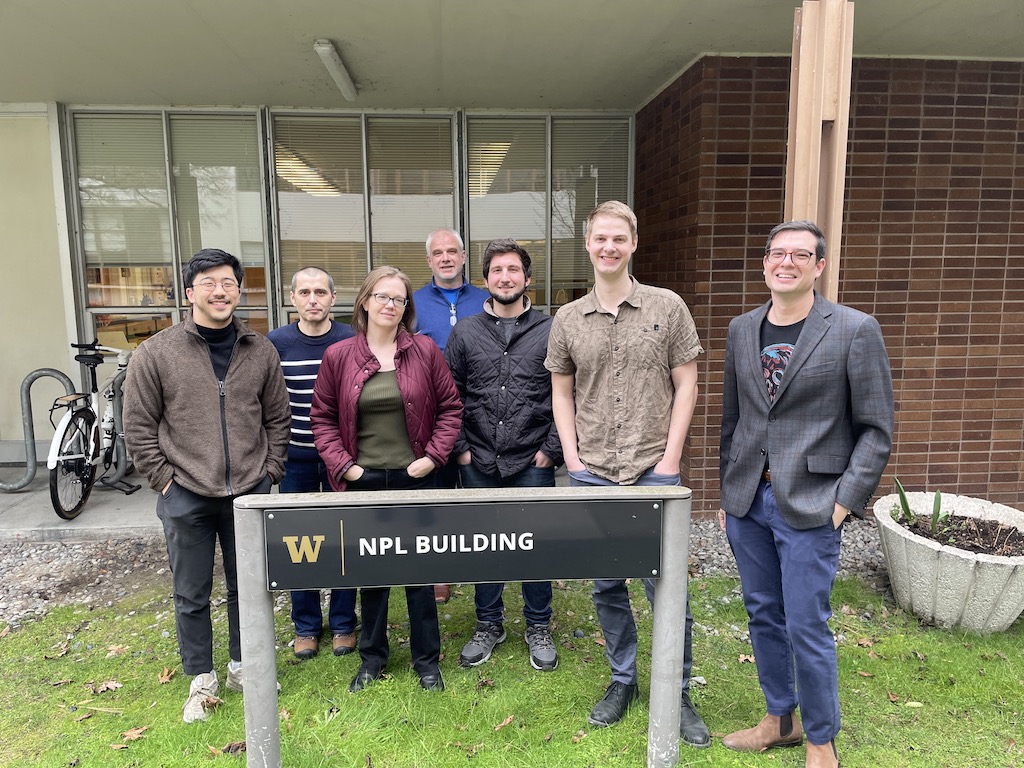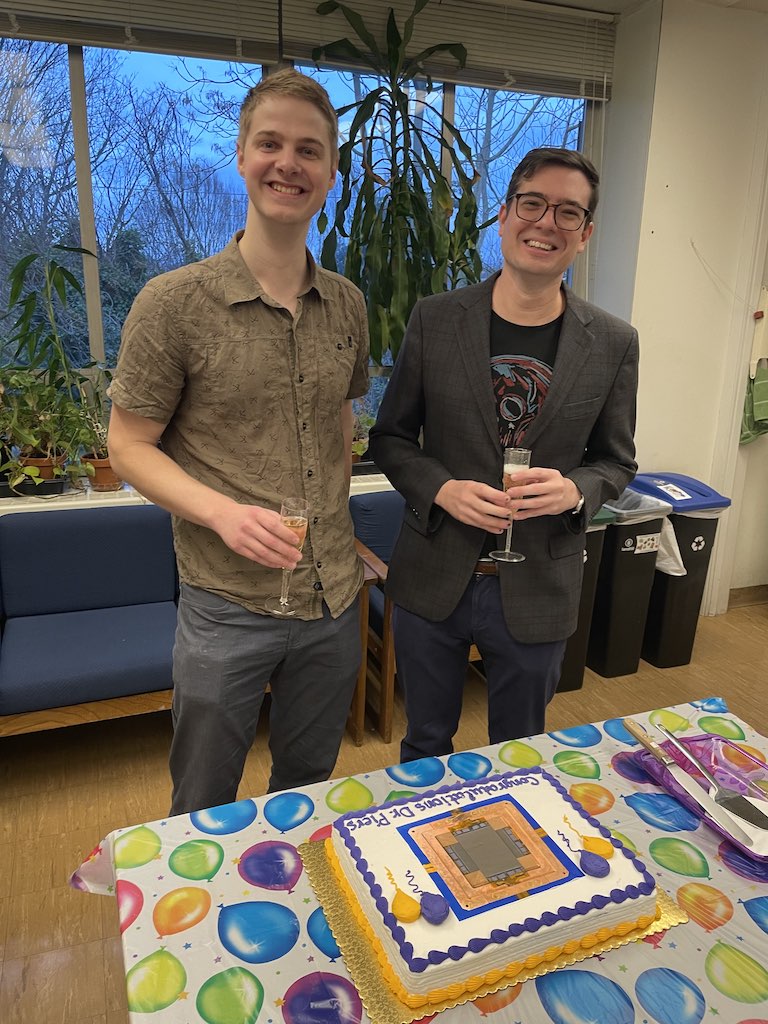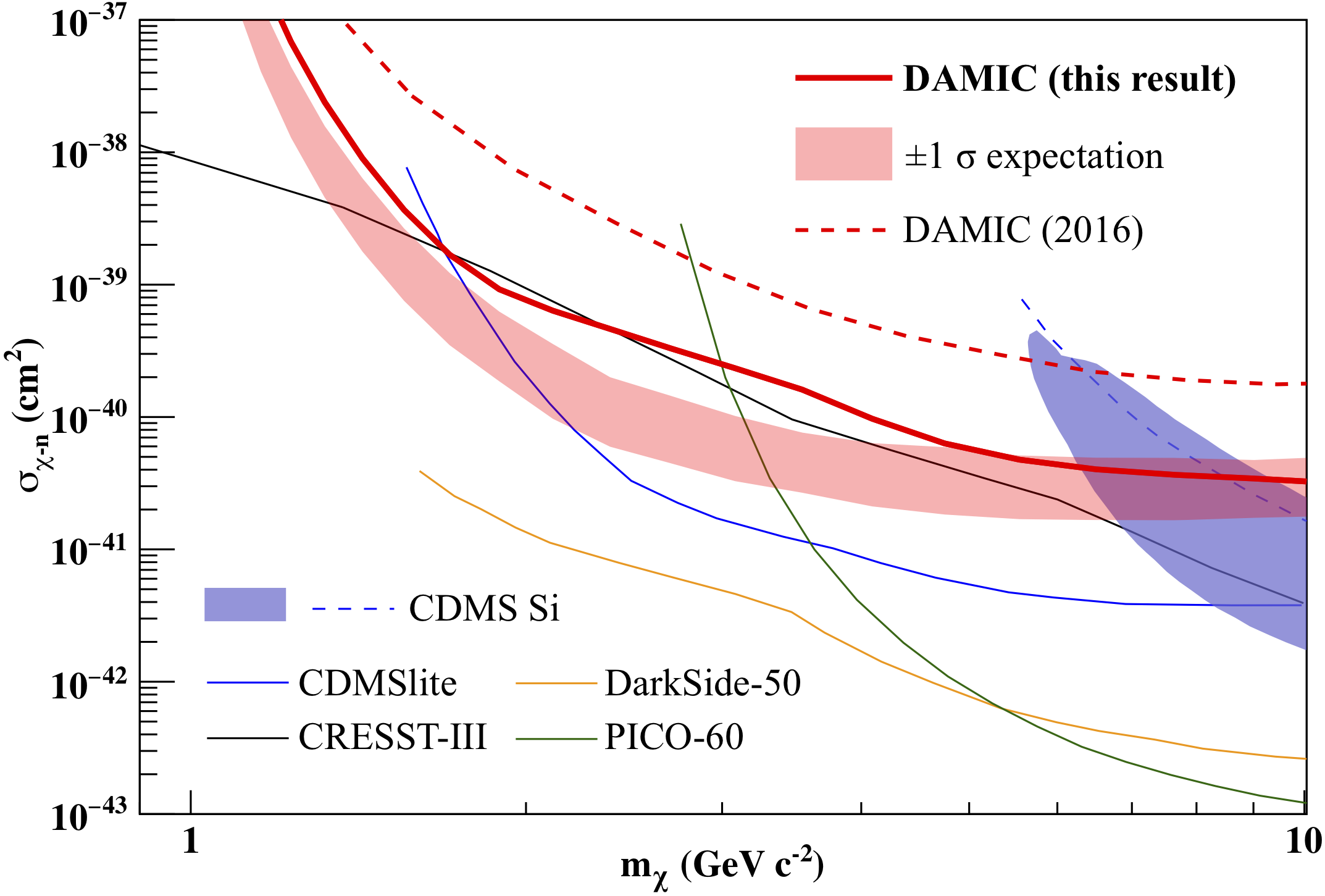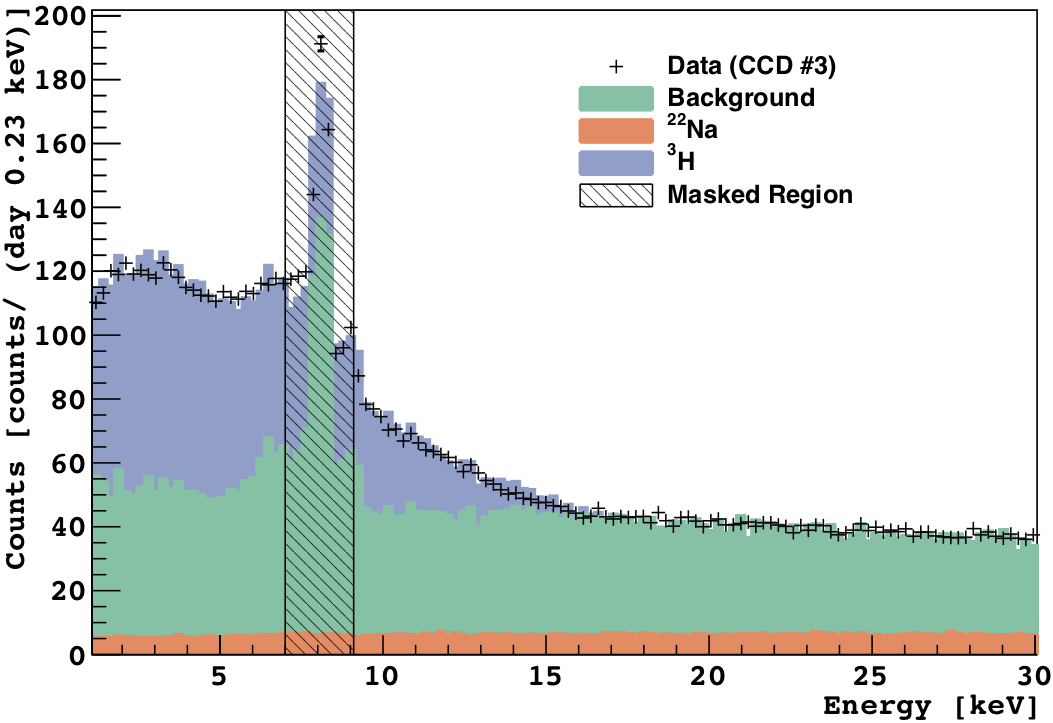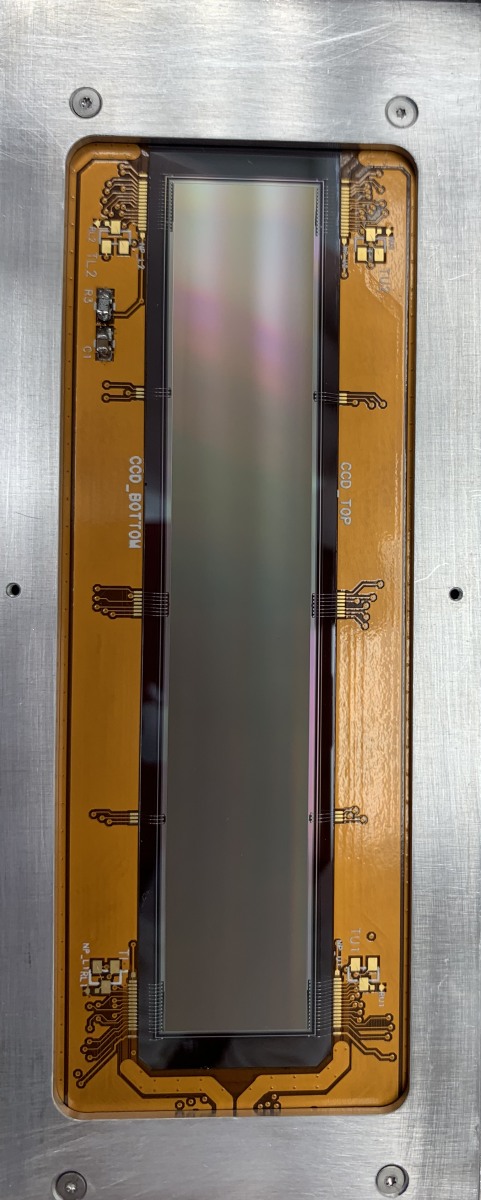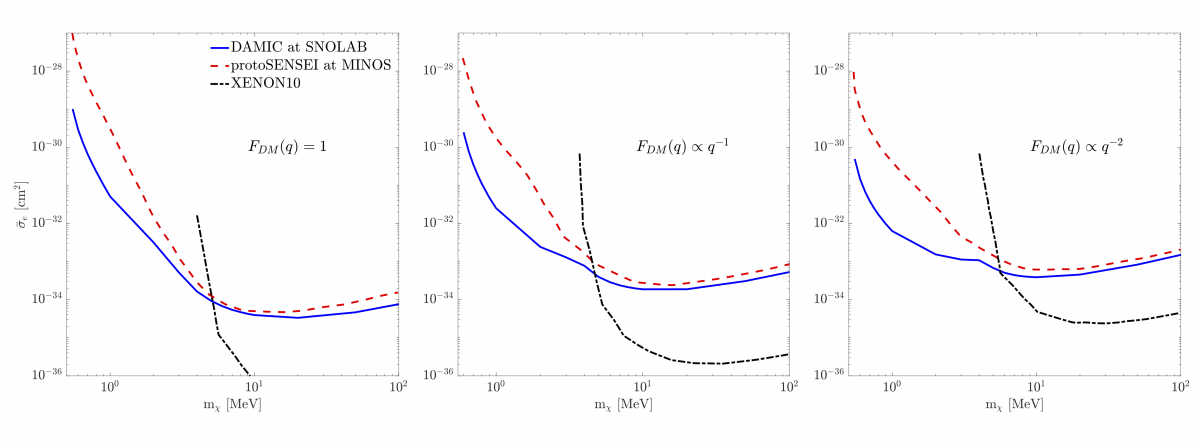DAMIC-M constrains the hidden-sector model of dark matter!
The results from our recent dark matter search with two prototype CCD modules in the Low Background Chamber at the Modane Underground Laboratory have now been published in PRL. Although we have not yet discovered dark matter particles, we exclude, for the first time and for a wide range of particle masses, the hypothesis that hidden-sector particles produced by the "freeze-in" mechanism in the early universe constitute most of the dark matter. Until now, this was one of the favored hypothesis for sub-GeV dark matter particles.
This is certainly another milestone in the DAMIC-M program. The excellent performance of the CCD modules, which were able to collect a kilogram-day exposure with minimal backgrounds, bodes well for the large-scale DAMIC-M detector, currently under construction.
|
|
|
| Left: Exclusion limit from DAMIC-M's LBC for dark matter particles interacting with electrons via an ultralight mediator. In this scenario, we exclude for the first time the predicted cross section for particles produced by the freeze-in mechanism in the early universe. Right: Prototype CCD module with four 9-megapixel CCDs used for the dark matter search. The modules were fabricated and tested at the UW before deployment in the LBC. | |


